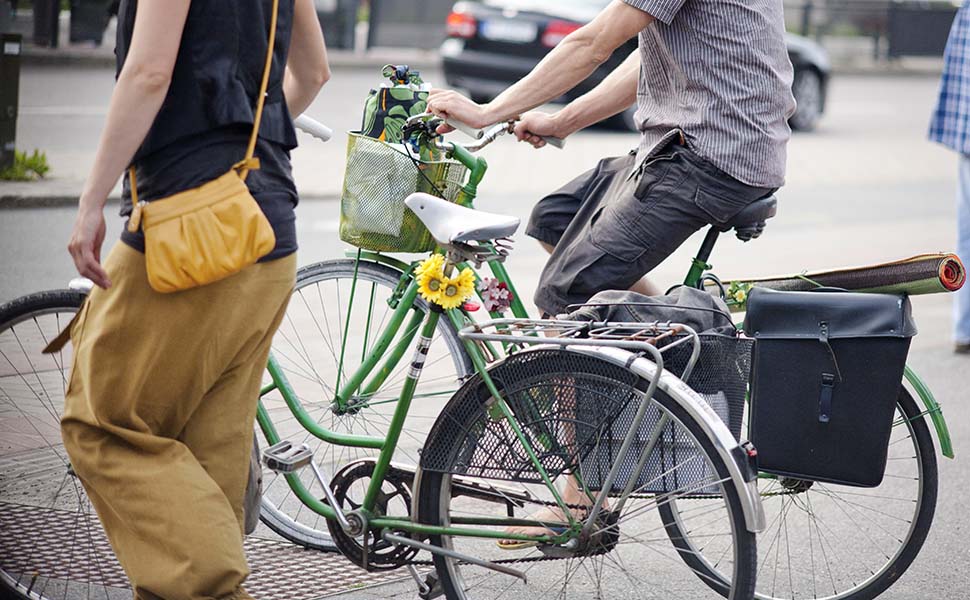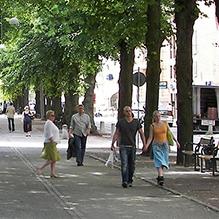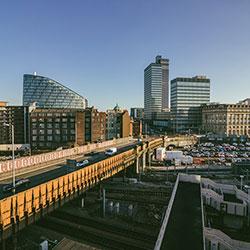
How to reach the 2°C target
Together with the rest of the world, the Gothenburg Region is facing one of the greatest challenges of our time – to mitigate climate change. To meet the challenge and reach the so-called 2°C target both technical solutions and lifestyle changes are needed. Technical improvements in the energy and transportation system must be accompanied by changes in our lifestyles and consumption. We also need bold policies, today's climate policies is not enough.
This is made clear in the report Low-carbon Gothenburg – Technological potentials and lifestyle changes that is launched today. The report is produced by the WISE, Well-being in Sustainable Cities project. The report aims to increase awareness of possible measures to reduce Gothenburg’s emissions down to a sustainable level.
The report looks at emissions from a consumption perspective; this means that the climate impact is calculated based on consumption, regardless of where the emissions take place.
- We choose to look at consumption to get all the climate impact of the Swedes' lifestyle, including for examples emissions in South America from imported beef and emissions from all our flights. The official climate statistics looks at this from a production perspective and only covers emissions that occur in Sweden, says Jörgen Larsson, project coordinator for WISE.
The report outlines how climate impact differs between different lifestyles and describes how a shift to a more climate friendly lifestyle could look like for six typical household in the Gothenburg region. The emissions during 2010 have been calculated for the six different households in eight different areas: travels by flight, car and public transport, electricity, heating, food, public consumption and other consumption. Emissions per person and year vary between 6.5 and 10 tons of carbon dioxide per year. Far from the 2°C target, that requires emissions in 2050 will be max 1-2 tons of CO2 per person per year.
To find out what needs to be done to reach the goal, calculations on climate effects have been carried out for the years 2030 and 2050 based on three different climate policy orientations. The results were clear. Business as usual will not work. The increase of meat consumption, car usage and air travel needs to stop. If not, emissions will increases by 30 percent by the year 2050. If today's climate policies would be implemented successfully only a marginal reduction would be accomplished. However the goal can be reach. This is shown in the so-called climate scenario. But this requires substantial changes in private and public consumption.
- Politicians and decision makers have to decide if they want to be proactive or not. If you want to be proactive you need to fight for the introduction of sufficiently strong instrument, not only for energy and road transport but also in terms of food and air travel, says Jörgen Larsson.
Changes must be made at both the international, national, regional, local and individual level. The report makes a number of suggestions on what needs to be done such as reduced working hours, that powerful energy efficiency much be achieved, expanding public transport and reducing car traffic. An analysis of impact on the quality of life of these suggestions has also been performed.
- Our statistical analysis shows that reduced consumption of meat, car usage and reduced air travel have no connection to the quality of life. We have concluded that the fear that a shift to a more climate friendly life style would lead to a decreased standard of living and quality of life that have existed for so long is completely unjustified, says Jörgen Larsson.
The report will contribute to the ongoing development of Gothenburg's new climate strategy and the hope is that both the public and decision makers will continue to discuss these important issues.
Download the Brief: Low-carbon Gothenburg - Technological potentials and lifestyle change
The 2°C target
Both the European Union and Sweden as well as Gothenburg has adopted the so-called 2°C target , which means that the global average temperature at the Earth's surface should not rise more than two degrees above pre-industrial levels. A reformulation of this goal to levels of emission is dependent on many parameters, such as uncertainties in climate sensitivity and uncertainties in the carbon cycle. A study shows for example that in order to meet the target with a 75 percent probability, the global carbon emissions has to be halved between the years 1990 and 2050 and approach zero at the end of the century. To this, it is worth noting that that global emissions of carbon dioxide increased by 36 percent between 1990 and 2007.







